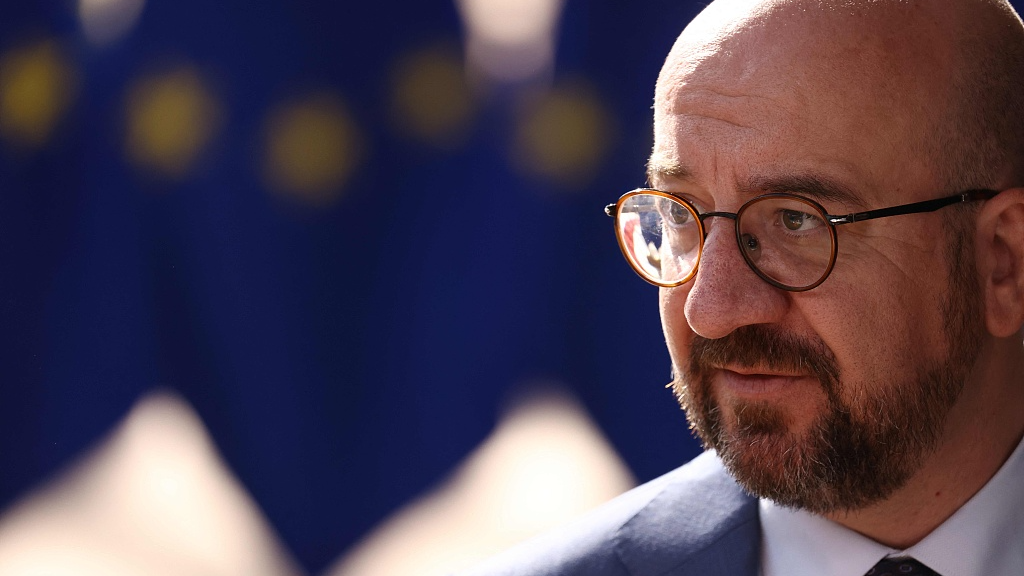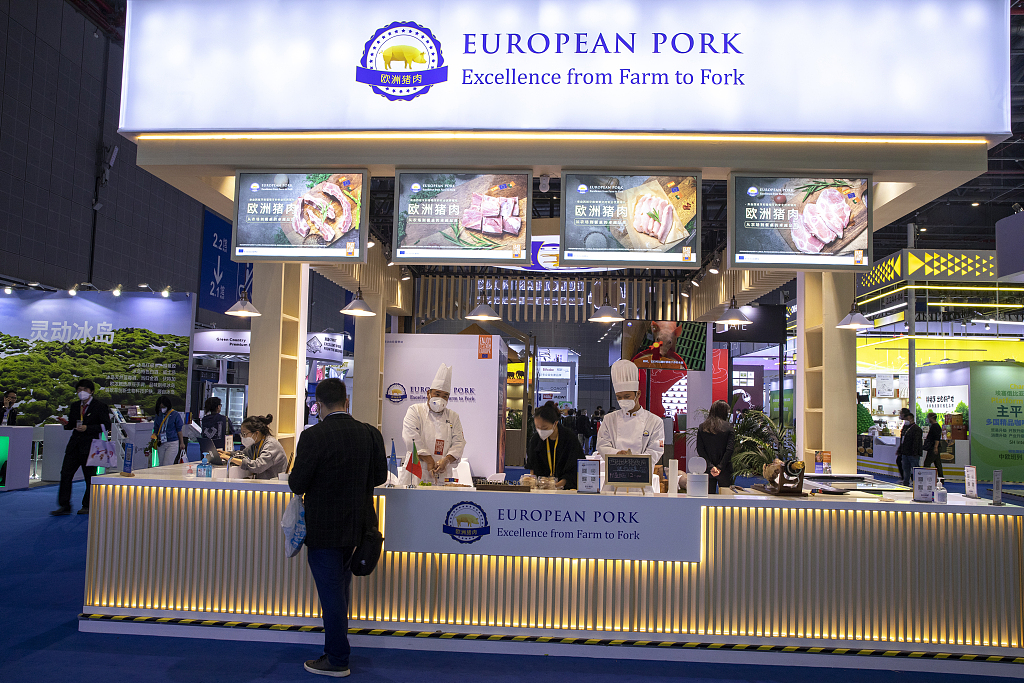
European Council President Charles Michel arrives prior to a meeting in Brussels, Belgium, June 23, 2022. /CFP
European Council President Charles Michel arrives prior to a meeting in Brussels, Belgium, June 23, 2022. /CFP
Editor's note: Song Xin is the CEO of Sinnvoll Consulting and a former policy advisor at the European Parliament. The article reflects the author's opinions and not necessarily the views of CGTN.
European Council President Charles Michel is visiting China on December 1 to meet with Chinese leadership including President Xi Jinping, Premier Li Keqiang and Chairman of the Standing Committee of the National People's Congress Li Zhanshu.
According to Michel, "it would be good to engage with China since we are at a critical juncture." The EU is apparently willing to get a sense of where China stands and in which direction China will go.
This trip is extremely important considering there hasn't been any physical bilateral meeting between the EU's leadership and their Chinese counterpart since the beginning of the pandemic. Both sides tend to look for a new equilibrium between the Idealpolitik and Realpolitik.
After German Chancellor Olaf Scholz's China visit last month, there were intense discussions on the EU's China strategy inside the European Council among the 27 leaders of the member states. It is more than obvious that the EU is redefining its relationship with China in a way that this could serve best to optimize its sovereignty in a multilateral world.
From the perspective of the EU, the bilateral relationship with China has become more complex and ambivalent than ever. China has been seen simultaneously as a "cooperation and negotiating partner," an "economic competitor" and "a systemic rival promoting alternative models of governance," as stated in the EU-China Strategic Outlook published in March 2019.
This three-dimensional definition describes in a particularly accurate way that the diplomatic complexity with Beijing is characterized at the same time by cooperation, competition, and conflict. It remains unclear how the three dimensions could be compatible, could be somehow interrelated and how they should be understood in the long run.
During the last seven years of constant uncertainty and instability at the world and regional level, the EU understands fully the importance of constructing its own autonomous policy. The EU knows that if they don't make efforts to defend their own strategic interests, they would be confronted with more severe security challenges in the future. The Unites States have been and will always be their most important partner but the EU does not want to be seen as the sidekick of the U.S. Therefore, instead of following the U.S.'s rivalry approach, there is an urgent need from the EU side to redefine their approach to China.
What should we therefore expect from President Michel's visit?
First of all, frank and direct talks regarding different areas are expected. The discussions must cover various topics including COVID-related policies in China, war between Russia and Ukraine, cross-Strait relations, the possibility to grant EU investors a greater level of access to China's market, human rights issues in Xinjiang Uygur Autonomous Region and Hongkong Special Administrative Region, among other topics. Topics like the common fight against climate change and the joint effort for energy transition would also be on the table for both sides.
Secondly, there might be some further progress on deepening the EU-China trade relationship. So far, the EU is highly dependent on China for their supply chain and raw materials, which leads to a growing trade deficit to the benefit of China. Investment-related regulations are also essential for the bilateral commercial relationship. The EU has heightened concerns over security implications of Chinese investments in the region's critical infrastructure while China worries about the politicized scrutiny over Chinese investment in the European market.

The booth of European Pork at the food and agricultural products exhibition area during the fifth China International Import Expo in Shanghai, China, November 10, 2022. /CFP
The booth of European Pork at the food and agricultural products exhibition area during the fifth China International Import Expo in Shanghai, China, November 10, 2022. /CFP
Therefore, how to build a healthier and fair-trade relationship would be the key question raised by both sides, especially during the global recession. Besides, the EU-China Comprehensive Agreement on Investment had been signed by both sides in December 2020 while the ratification process was halted by the European Parliament. This time both sides could clarify their requests and the procedure timeline.
Last but not least, technology standards and standardization are key issues to be discussed. The EU and the U.S. are deeply involved in the EU-U.S. Trade and Technology Council, which is a dedicated forum to shape the most important rules, norms and standards on trade and technology. Their next meeting is taking place in Washington on December 5, four days after Michel's visit to China.
The question is: if the EU and the U.S. get closer on standardization in the areas that they intend to cover, including data governance, misuse of technology, and supply chain security, Chinese exports and Chinese industries would be challenged. And so will be the EU-China relationship. Because it could be interpreted as a rejection from the EU side to Chinese technology and products.
Even though it remains unclear whether President Michel will take part in a joint press conference or a joint statement with his Chinese counterpart, their meeting is well seen because after all it is their first engagement and discussions after a long time, with expectations regarding the deliverables. As long as both sides continue to meet and talk, there will be new impetus on the relationship and opportunities for that relationship to further develop.
(If you want to contribute and have specific expertise, please contact us at opinions@cgtn.com. Follow @thouse_opinions on Twitter to discover the latest commentaries on CGTN Opinion Section.)